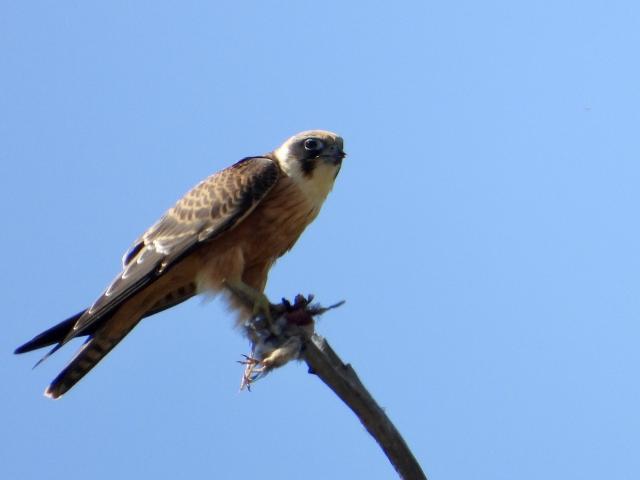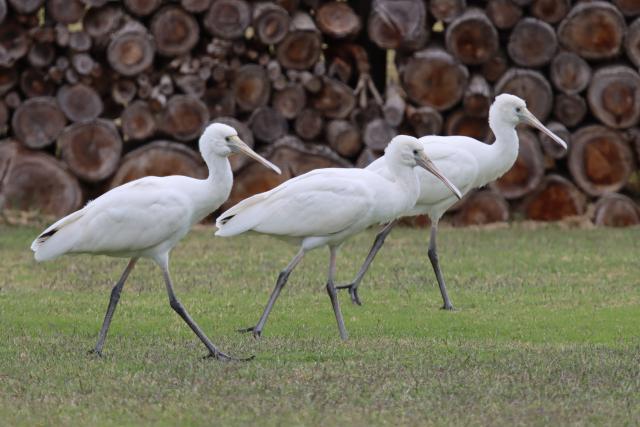I’ve spent most of the last fortnight in Bermagui on the south coast of New South Wales.
It’s been lovely to have a break from work and to enjoy hearing eastern whipbirds and satin bowerbirds in the garden. At the time of writing, I still have a few days of the holiday to go, and I’ve seen 72 species of birds on the south coast, with the highlights being four critically endangered far eastern curlews at Wallaga Lake, and another migratory shorebird, namely a double-banded plover at Barragga Bay.
I also had a long walk through a rainforest at Gulaga National Park and spotted a few black-faced monarchs, many eastern yellow robins, and four bassian thrush.
Fortunately, I’ve received messages from Voice readers that have kept me in touch with a few exciting bird observations made around the Bellarine Peninsula.
Pete and Chris, who live in Ocean Grove, have a lovely pond in their garden that is surrounded by reeds and grasses.
Pete made an exciting discovery that there was a buff-banded rail in his garden pond. Rails are a large and diverse family of ground dwelling, mostly wetland birds. The rail family includes birds such as crakes, coots, swamphens, and moorhens.
Buff-banded rails are shy birds that inhabit aquatic habitats that have dense reeds and vegetation to hide in. They eat crustaceans, invertebrates, seeds, fallen fruit and other vegetable matter, so there must be food available in Pete and Chris’s pond for the rail to consume, plus enough shelter for the bird to hide from predators.
I received an email from John, who lives near Leopold. John told me that a small flock of yellow-billed spoonbills paid a visit to his property, after they had been feeding in the neighbour’s dam.
They stayed on for a while and did some preening, and a few Australian white Ibis joined them in this activity. Some of the Ibis were busy digging grubs while others were on lookout duty.
It’s not an unusual sight for ibis and spoonbills to be joined in mixed flocks as they do share similar habitats. John noted that they have no dogs or cats on their property so the spoonbills may have felt safe to rest on the grass, especially with the Australian white ibis lookouts, however there are foxes and feral cats on the property that hunt for rabbits at night.
Looking at John’s photos, the yellow-billed spoonbills look like fledglings, as they have smaller bills than the adult birds and lack the facial markings of adult birds, so John must have had a nest somewhere near his land.
John also sent a photo of a pair of white-browed scrubwren on his birdbath in the garden. The photo was taken through a double-glazed glass door. John explained that he observes many bird species visiting his three bird baths that are cleaned and refilled frequently. White-browed scrubwrens are commonly seen and heard around the Bellarine Peninsula, but they inhabit dense undergrowth and are difficult to photograph, so it was a good idea to take the photo from inside the house.
I also received an email from Carole, who visited a private property at Avalon where the owner and his son are very keen birders and they showed Carole some great bird habitats on their property.
An Australian hobby posed for a photo from Carole while it was consuming a hapless small bird. There are a few species of raptor, such as brown goshawks and peregrine falcons, that feed on birds.
Australian hobbies are expert and fast fliers and they feed on bats, small birds and flying insects.









